The calendar says that winter has arrived. What’s been going on in Explore the Wild?
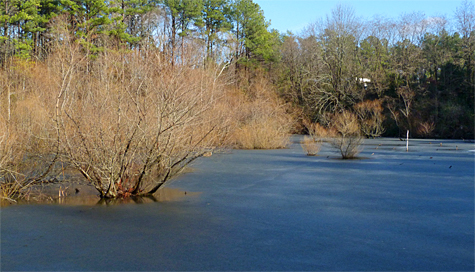
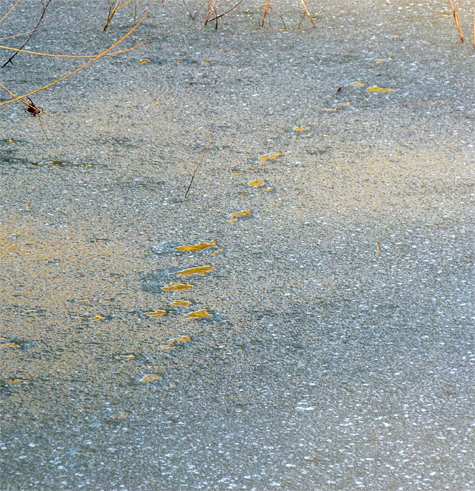
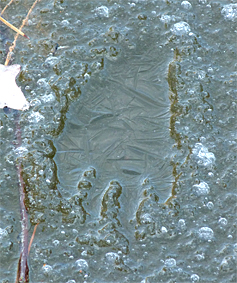
Raccoons make nightly sorties around the Wetlands in search of food, which can be anything from persimmons to tadpoles, or a raid on the trash receptacles along the paths of the Museum (the trash bins are emptied each day before closing so the pickings are slim there).
Raccoons are not the only animals roaming Explore the Wild. The tracks below were left in the snow a few days after the raccoon tracks appeared.
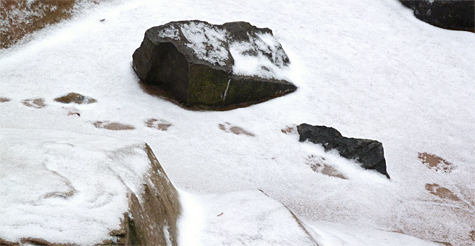
The question in the caption above is a trick question. It was one of the bears in the Black Bear Enclosure that laid down those tracks.
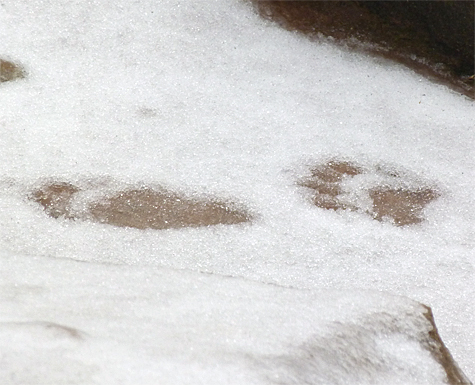
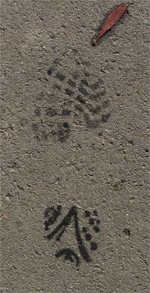
All types of animals were out and about in the cold air of the past several days leading to this, the second day of winter.
Despite the cold, there were even a few people who braved the cold to come out hiking through the outdoor exhibits. The bears, wolves and lemurs are there regardless of the weather, although the lemurs are snug behind glass. All are worth the trek. But, if you enjoy experiencing the out-of-doors in relative solitude, this is an excellent time to visit Explore the Wild and Catch the Wind.
The birds that frequent the woods along the trails of Explore the Wild are easier to locate when its cold outside as they pick up their foraging routine. The very common Yellow-rumped Warblers are busily scoffing up the wax myrtle berries, indifferent to human passersby.
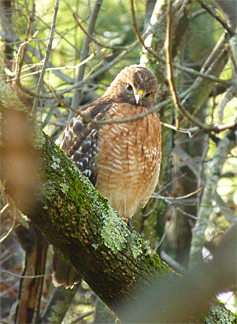
The Red Shouldered Hawk still hunts among the trees for small birds, mammals, and even frogs at this time of year. With no leaves on the trees it’s often easy to spot them as they sit quietly peering down at what’s below them.
On the other hand, the local Great Blue Heron, doesn’t seem to be doing much hunting, at least not here at the Museum. There have actually been two blue herons coming in to roost in the Wetlands, but I haven’t seen either of them actively hunting. I hope that they’re finding food elsewhere.
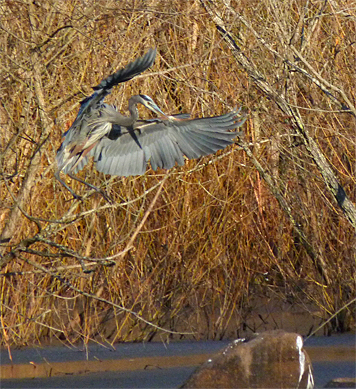
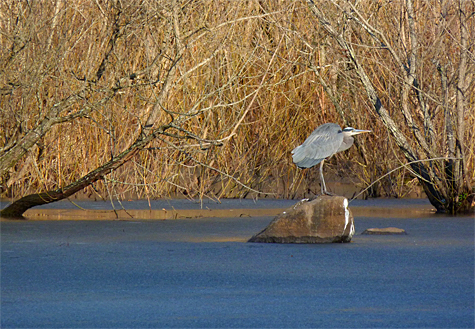
As mentioned before, passerines are often easier to locate during cold weather as they scramble to find sustenance. They are often more concerned with finding food than being food, so they’re less wary of you watching them.
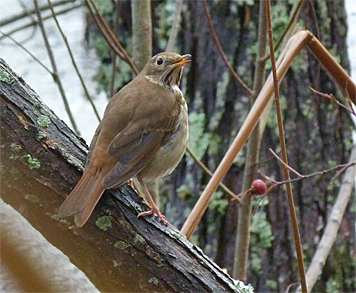
Hermit Thrushes stake out winter feeding areas, usually near a source of berries, and can often be found in the same location with some consistency. The one pictured above looks to be a young bird (HY) and was in the process of being driven off one of those feeding areas by another of its kind.
There is always something going on out in Explore the Wild and Catch the Wind, so come on out and see what you can find!